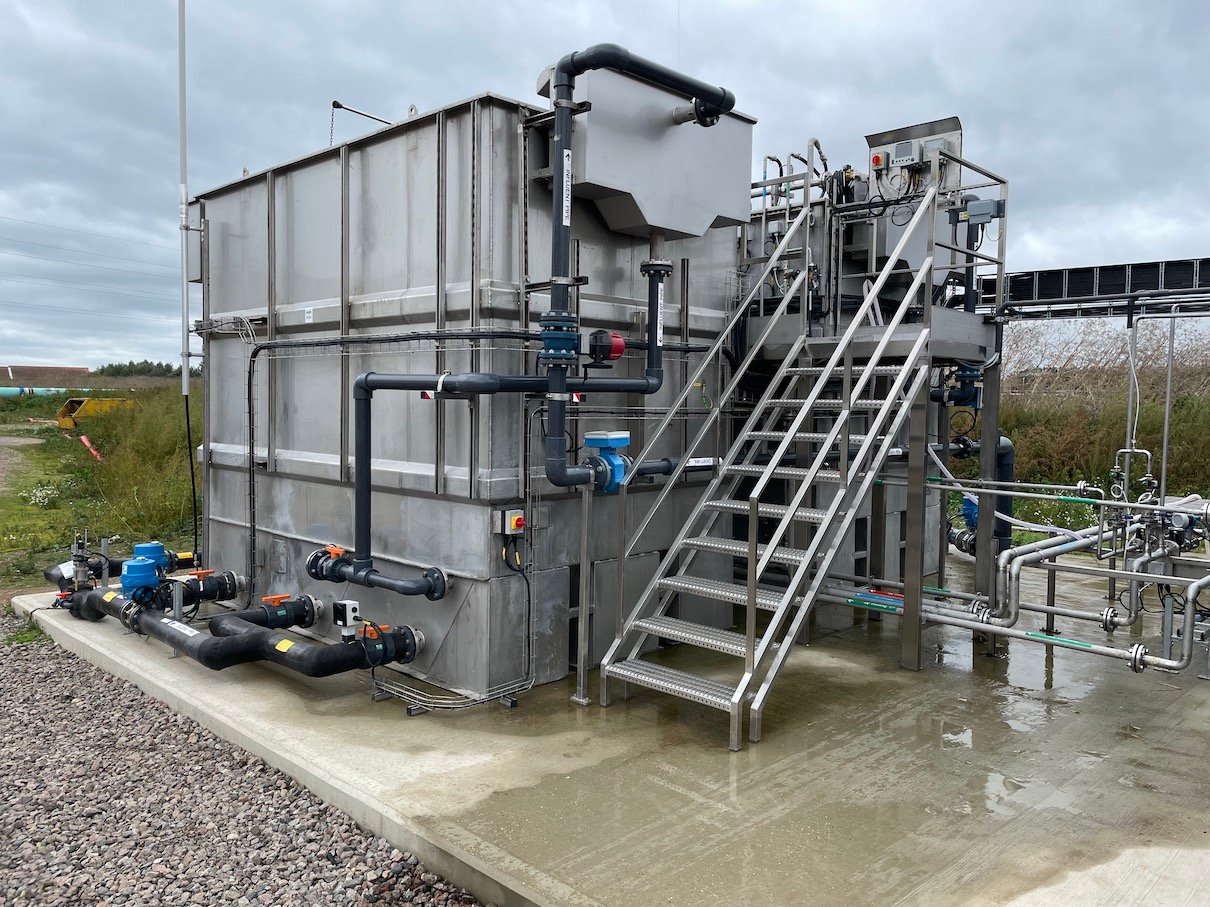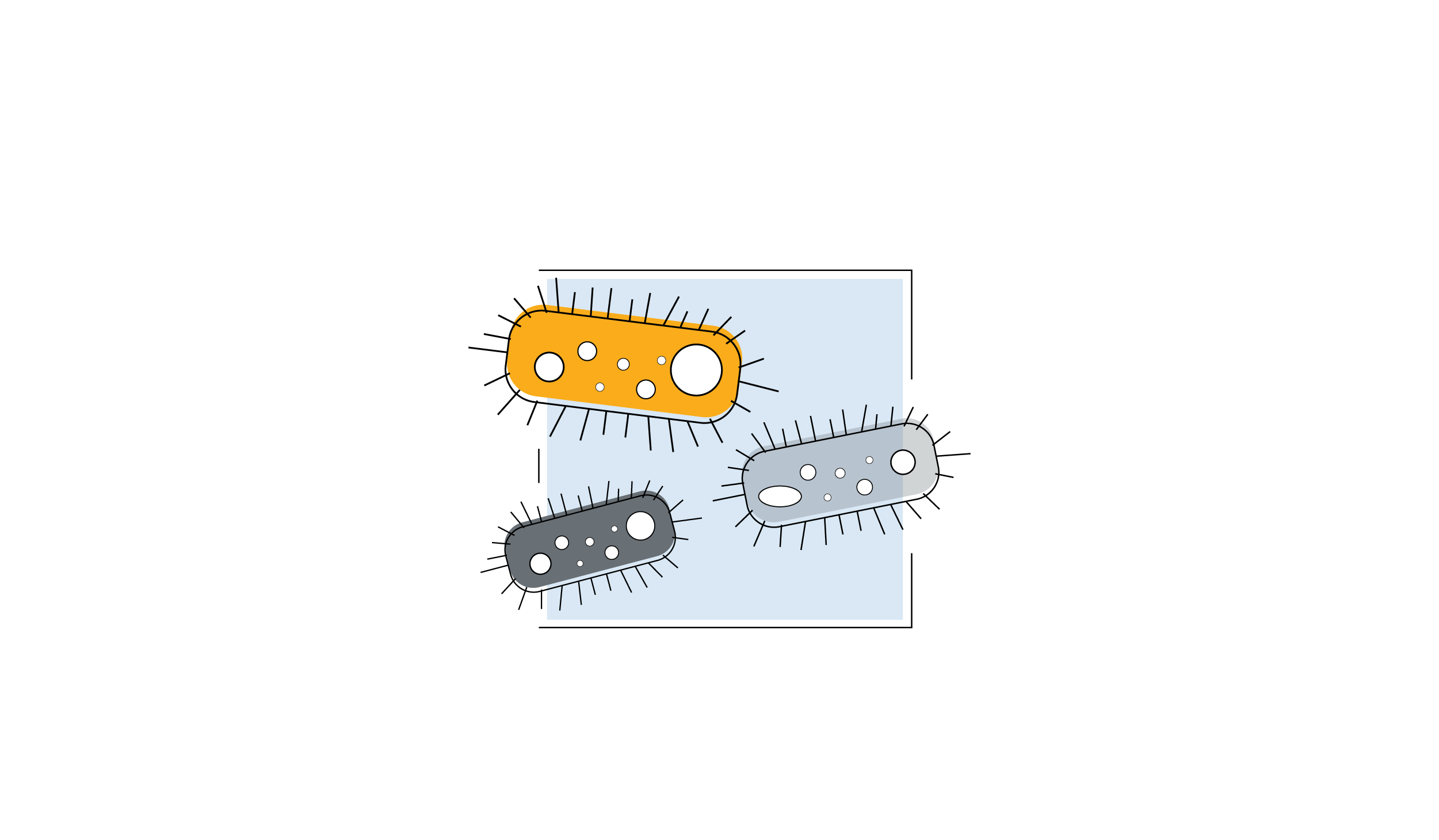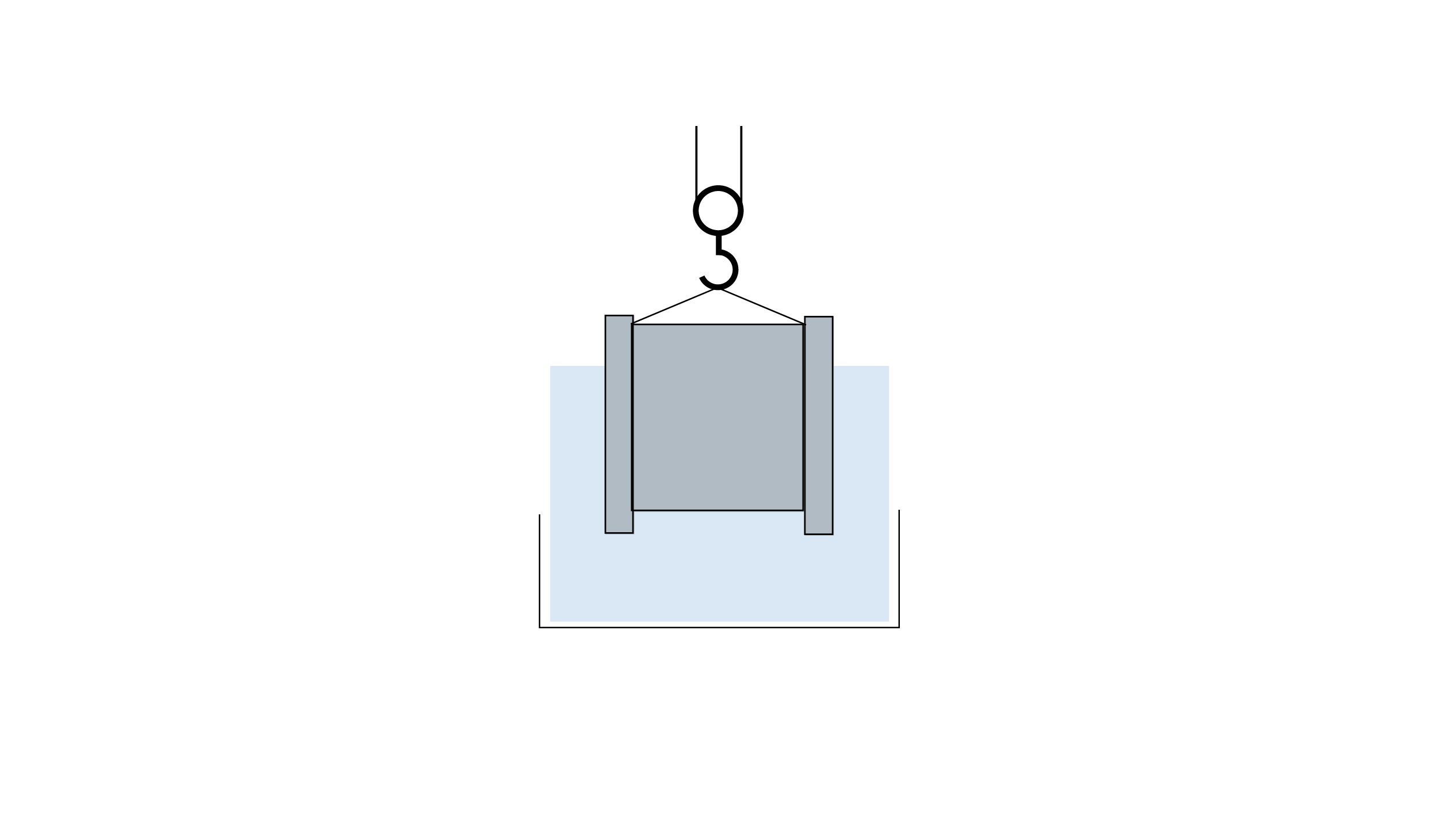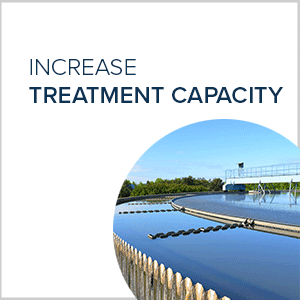Bubble-less MABR system can reduce energy costs for wastewater aeration
CREATING A BUBBLE-LESS AERATION OPTION
The secondary or biological stage of traditional activated sludge wastewater treatment plants is where most of the energy is consumed. It far outweighs the operational costs of pumps, mixers, chemical addition, lighting, heating, etc.
Oxygen needed by bacteria used in this stage is usually delivered in the form of atmospheric air, through mechanical equipment, and usually against a hydrostatic pressure created by four to six metres of water depth. Rotating blade mixers, jets and/or large blowers are needed to push air through this pressure (head), to ensure all bacteria receive sufficient oxygen.
Over the past 100 years, engineers and manufacturers have strived to increase oxygen transfer efficiency. Given that lots of small bubbles have a greater 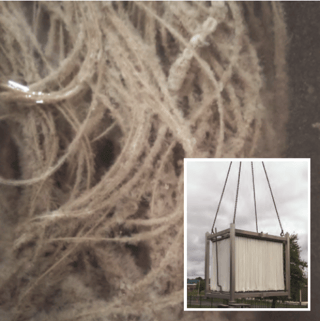 surface area than fewer large bubbles, the quest to create aeration products that produce smaller and smaller bubbles has been ongoing. The number of perforations and surface area of the diffusers is steadily increasing and small traditional discs and tubes are giving way to large panels. These promise minute bubbles, great distribution and low energy costs.
surface area than fewer large bubbles, the quest to create aeration products that produce smaller and smaller bubbles has been ongoing. The number of perforations and surface area of the diffusers is steadily increasing and small traditional discs and tubes are giving way to large panels. These promise minute bubbles, great distribution and low energy costs.
The concept of making the smallest bubble, with an infinitely small surface area, seems logical, and would certainly lead one to believe that the oxygen transfer rate will increase. However, other treatment plant factors must be assessed. No two wastewater treatment plants are the same; all have varying fluid, site and mechanical characteristics. Most contain solids, all contain biological matter.
Small membrane perforations may foul quicker than larger membrane perforations, so a unit that produces tiny bubbles when new may not work well after some time in operation. The fact that there is a hole at all invites problems. Maintenance can be costly.
Blower back pressures will most likely be higher on systems using smaller membrane perforations, though there is every chance that less air will be required as the system has the potential to transfer oxygen more efficiently than a larger bubble system. Larger motor blowers and increased power costs due to increased back pressures should be factored in by designers.
Then, there is the result of having a very efficient fine bubble system that designers tend to overlook and many owners are simply not made aware of this. If their system is designed to be highly efficient and less air is required, there may be insufficient air in the biological zone to keep the food and bacteria in suspension. An activated sludge system only works well when the bacteria are kept in suspension, receiving plenty of food and oxygen. Solids settling out in a traditional activated sludge system can have detrimental effects.
CREATING A BUBBLE-LESS AERATION OPTION
OxyMem’s innovative membrane aerated biofilm reactor (MABR) is based on a mechanism that mirrors nature, where chemicals pass across a cell wall, on demand and dependent on a concentration gradient. The OxyMem MABR is made up of modules, each containing 1,600,000 metres of thin walled, microbore tubes, which are submerged in the wastewater acting like tiny lungs for the biology. The tubes, though fractions of a millimetre in diameter, are hollow and have no perforations. The air inlet and outlet begin and end above the water surface, ensuring air in the tube is not pressurized by the hydrostatic head of water.
FOULING IS GOOD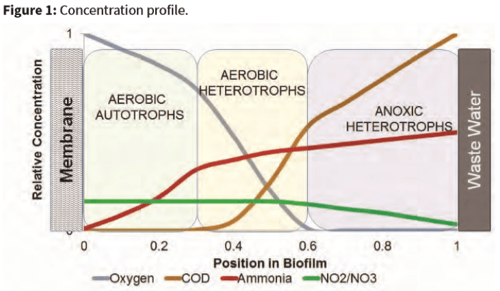
Biofilm, the matter that fouls tiny perforations on all diffusers, is what enables the OxyMem product to work. The biofilm grows on the outside of the membrane tubes (the wastewater side). This growth is what biodegrades the biological pollutants (food source) in the wastewater.
The attached biofilm simply draws any oxygen it requires across the wall of the membrane tube, which is gas permeable and without perforations. Oxygen travels from areas of higher concentrations (inside the membrane tube) to areas of lower concentrations (inside the bacteria), and the greater the concentration gradient, the faster the flow of oxygen.
Figure 1 shows a representative profile of the biofilm growing on a counter-diffusional membrane utilized in the MABR. The gray profile represents the oxygen diffusing across the membrane wall (non-porous). This occurs due to the concentration gradient and can be operated at low pressure (150 – 200mBar). The dissolved pollutants, represented by the brown (COD) and red (ammonia) lines, are degraded as they travel across the biofilm. The green (NO2 / NO3) line represents the denitrification process which occurs. The nitrate generated by the ammonia oxidizing bacteria (AOB) is taken up in the anoxic portion of the biofilm and is converted to nitrogen, effecting simultaneous nitrification and denitrification. (You may be interested in our 'Design you own MABR' Blog for further information)
ENERGY SAVINGS
As air in the membrane tube does not need to be pressurized to six metres, the physical blower and motor required are significantly smaller than on typical diffused aeration plants. This energy efficient process which can achieve 8 kg O2/kWh provides improved nutrient removal and impressive control, with a fraction of the footprint of conventional systems. No bubbles exist to reach the surface of the water and burst, allowing unused oxygen to vent to atmosphere.
Due to the fact that oxygen is demanded by the biofilm across the membrane tube wall, only when it needs it, there is a great deal of interest in using only pure oxygen in the system. Tests have shown that 95% oxygen transfer efficiencies can be achieved allowing operators to move closer to energy neutral goals.
CUTTING SLUDGE PRODUCTION IN HALF
Rather than agitating the complete tank and keeping solids in suspension, a packaged OxyMem system favours a less turbulent fluid flow. No aggressive, high energy mixing is required. Once suspended biomass settles out at the base of the system, it is wasted just as it would be from a clarifier. The lack of a suspended biomass also means that approximately 50% less sludge is produced compared to conventional activated sludge. The biofilm delivers a much lower sludge yield, 0.1 kg – 0.15 kg TSS/kg COD removed, because more of the COD is oxidized to CO2.
Savings on pumps, pumping, pipelines, storage, thickening and sludge disposal can be substantial. Many regions do not have the ability to use or disperse sludge, so less production can be a huge advantage.
QUICK INSTALLATION AND STARTUP
The OxyMem system requires a minimal footprint, can be deployed as complete, standalone (IFAS sytle), or package plants, needing only a hardstanding area on-site, or as single cages that can be dropped into existing tanks to increase existing treatment capacity. Whichever approach is taken, the cage units will start treating water as soon as a biofilm attaches to the MABR membranes, usually in only a few days. Once operational, OxyMem’s biofilm measurement and control system helps ensure the MABR runs at optimum performance.
Every cage has an off-gas analysis carried out on it, in real time, and operators have easy access to all data. Trends on oxygen uptake rate, CO2 release rate, fouling rate, automatic cleaning frequency, line pressures, alarms, etc., can be viewed.
To date, OxyMem MABR technology has been deployed under commercial agreement to Brazil, England, Ireland, Japan, Kingdom of Saudi Arabia, Spain, Sweden, Netherlands and Northern Ireland. It has been tried on municipal, food and beverage, pharmaceutical, landfill leachate, semi-conductor and refinery wastewaters, with great success.
The OxyMem MABR offers high-rate treatment with volumetric rates in the range of 5 kg – 32 kg COD/m3 /day.
This article was authored by John McConomy (OxyMem, Commercial Director) and originally published in Environmental Science & Engineering Magazine - https://issuu.com/esemag/docs/ese_dec2016_book-light/58
30-220 Industrial Pkwy. S.,
Aurora, Ontario L4G 3V6
905-727-4666 ext. 7
www.esemag.com
Summary
MABR holds out the very real possibility of having a transformative impact on the way we plan, manage and operate wastewater infrastructure. The principal benefits are 75% Energy saving, 50% less sludge, in a greatly reduced footprint (Up to 80% reduction). Don't you owe it to yourself and your organisation to investigate further? Please consider reviewing our whitepaper on MABR

